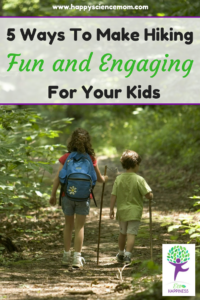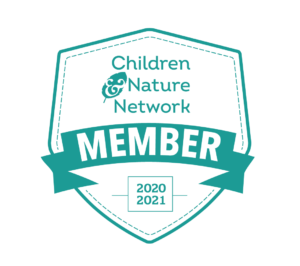 This guest post is written by Kimberly Yavorski, a freelance writer with a passion for learning. She writes frequently on the topics of parenting, the outdoors, and current events. More of her work can be found on her website www.kimberlyyavorski.com. She is also on Facebook. This article was originally published at www.letsgetoutside.us.
This guest post is written by Kimberly Yavorski, a freelance writer with a passion for learning. She writes frequently on the topics of parenting, the outdoors, and current events. More of her work can be found on her website www.kimberlyyavorski.com. She is also on Facebook. This article was originally published at www.letsgetoutside.us.
We are all used to traveling to get to a destination. It is a change of mindset to think of the journey as the destination, which is very difficult for young children to grasp as we often hear them ask “Are we there yet?” They have learned that there are schedules to meet and they need to hurry up and get moving so that we can reach our destination on time.
Hiking, however, does not always have a destination. Sure, you may be hiking to a waterfall, picturesque overlook, or other awe-inspiring scene, but many times hiking is simply a walk in nature. Children new to hiking may find this boring and want to get back to their electronic entertainment as soon as possible. Try these fun tips to get them more excited about your hike and the importance of nature.
Alphabet Hike
Challenge them to search for each letter, consecutively. This can be in the form of an item that starts with the letter or finding the letter itself in nature. Tree branches curve and break, forming patterns above them. Leaves, especially in the fall, may have patterns that resemble letters. If you are creative enough, you may even see letters in wildlife, in the curve of a leg for example. Besides giving them something to do, it also encourages them to pay attention to their surroundings.
Artist Hike
Bring along a sketchpad or notebook and pencils, crayons, or markers to inspire creativity in your kids during the hike. Find a comfortable spot to stop for a break and ask your children to draw something interesting that they observed. You can also make it more challenging by sitting back to back with your child and describe what you see while he or she draws what you describe. These pictures can also be a lasting memento of your journey.
Sensory Hike
Encourage your child to use his or her senses to see how many things can be observed. Make a section of the hike silent to better hear the sounds of nature (being quiet may also enable you to see more wildlife as they will not be frightened off as easily). Breathe in the air and see if it smells different than at home. Can you identify where the smell is coming from? Ask your children to spend a few moments being mindfully aware of the many gorgeous colors around them in nature. You can add touch, but remind children that some plants can cause an itchy reaction so they should choose carefully. (This could be a time to add a lesson about plants such as poison ivy.) While taste could be interesting as well, this is not advised unless you know for certain what you are tasting and that it is not toxic.
Identification Hike
Teach your children how to identify the many amazing plants and animals that you find along your hike. You can focus on trees, birds, flowers, insects, or whatever seems to be in abundance in your hiking location. There are many good guide books that can help you identify species. If you do not have a guide book with you during your hike, you can take pictures and then research them later at home or at the library.
Scavenger Hunt
Do some research about where you plan to hike to get an idea of what you are likely to see. Make a list of items for your child to find. Add some creative ideas to make it more interesting, such as a tree hugging another or a rock that resembles a face. If you have children of varying ages, you can also adjust the difficulty so that the older kids are still challenged and engaged. Keeping Leave No Trace principles in mind to enjoy our natural world in a sustainable way that avoids human-created impacts, simply check off that these items were found or take pictures. Always leave nature as it was when you found it.
When hiking with kids, remember to take frequent breaks for water and a healthy snack. Let them set the pace and emphasize the fun factor. Point out the blazes on the trail and explain that we use those to determine which way to go. You can also bring along binoculars or magnifying glasses to examine nature in more detail. Make sure any trash from your snack gets packed up to take home–or to the trashcan in the parking lot. You might also want to be a good nature citizen and pick up any trash or non-natural objects you find on the trail for disposal (bring along a trash bag for this).





I used to do scavenger hunts with my first graders on quick walks on our “brain breaks” ! Love the other ideas too!
I don’t have kids yet. But I love hiking & when we have kids this is what we’ll do.
It’s amazing how far kids can actually hike when they are having fun (and how well they nap afterwards).
I love taking the two children I nanny hiking on rainy days with their rain boots because their favourite thing is playing in the mud along the way.
Thank you for the other thoughtful ideas to help keep it fun.
This is really fun. Can’t wait to do some (all???) of these. 🙂
These are some really lovely ideas!
http://www.dellalovesnutella.co.uk/